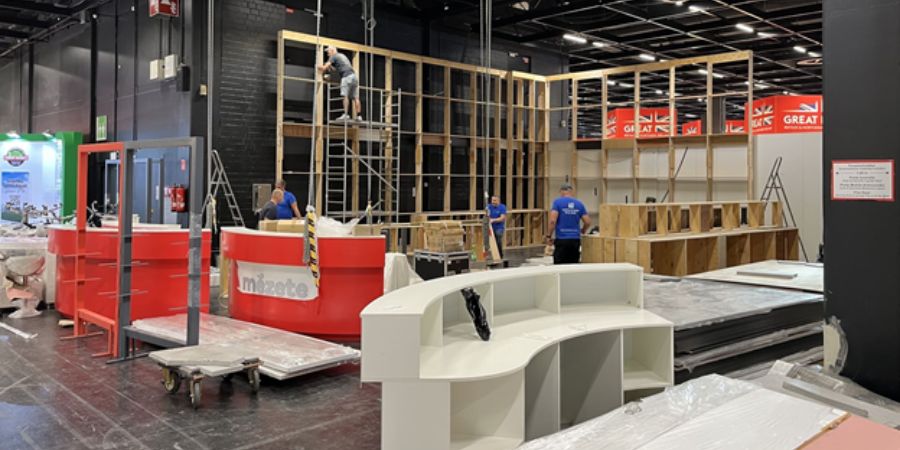At a busy trade fair, where hundreds of companies compete for attention, the best brands stand out even before a visitor approaches. In the first three seconds, a person decides whether to approach them. And if your exhibition stand is not “readable” from afar, you are losing the most valuable thing at the exhibition: attention.
Design for Distance
Professional exhibition stand builders from ESBAU develop exhibition solutions that work effectively from a distance. They know that in a crowd, it is important not only to have a stylish design but also to create visual elements that instantly convey the essence of the brand.
In order for a stand to attract attention from afar, the design must be clear and legible without unnecessary details. Space and clarity are more valuable here than decorativeness.
The so-called “three-second rule” says that a visitor should understand who you are and what you offer in the time they pass by. To do this, an exhibition stand design should contain only one main visual idea, a large logo, and a short message. Exhibition companies that create event stands even test layouts for quick perception – if the brand is not instantly recognizable, the layout is redesigned. Simplicity always wins in noisy conditions.
Message Hierarchy That Works
So much information is fighting for the visitor’s attention that your message should not only be noticeable, but also logically structured.
One promise, one proof, one action
This formula is a classic for a trade show exhibit company. It helps to build a message that is “readable” visually:
- One promise – what exactly makes your product valuable?
- One proof – a short fact, figure, or visual element that confirms this promise;
- One action is a call to action, to test, and to get a demo.
Such a structure helps to create a logical sequence for the visitor even without words. That is why exhibition stand contractors advise avoiding overloaded banners – brevity wins in any crowd.
Color & Contrast in Busy Halls
When there are dozens of bright brands around, color becomes your “beacon”. It is important to choose a good palette and create the right contrast.
Contrast is your ally at a distance. Use colors that differ not only in tone but also in luminosity. For example, a dark background and a bright logo, work better than pastel combinations. An exhibition builder can help to check the palette at different lighting angles, because what looks good on the screen may lose its effect under the lamps of the exhibition center. For large show stands, contrasting graphics literally “shoot” out of the crowd.
Shapes, Motion, and Lighting
Even the shape of your stand can guide attention. The human eye responds to movement, rhythm, and light—these are natural landmarks in spaces.
Overly complex designs confuse the viewer. Instead, an exhibition stand building with clear geometric shapes helps the eye move naturally—from the logo to the key message, and then to the interaction zone. The simplicity of the shapes also makes event stands easier to assemble and more versatile for transportation.
Lighting is not just a technical necessity, but a powerful identity tool. Use corporate colors in light accents or logo backlighting. A trade show booth builder can integrate dynamic lighting that creates movement and attracts attention from far rows. The right light emphasizes volumes and makes the stand “alive.”
Proof It Before You Print
Even the best idea can lose its effect if it is not tested before production. Testing the mockup is a mandatory step that beginners often skip.
“Squint test” — close your eyes and look at the mockup from afar. Is the brand recognizable? If not, you need to simplify the composition. “Grayscale test” helps to assess the contrast in black and white format — it shows how clearly elements are readable regardless of color. And mock-ups in real size allow you to check visibility from a distance of ten meters. This is the approach used by exhibition stand contractors in exhibition companies that create professional exhibition stand designs for international events.



